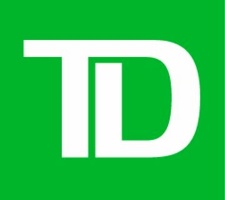@TDAM_Canada
Investor Knowledge + 5 Minutes = Current Insights
The barrage of volatility inducing headlines since the Trump Administration took office has made it a challenge to digest and make sense of the daily developments. Regardless of how the data is sliced, the signals remain deeply conflicted:
- Government jobs are being cut, yet jobless claims are steady
- U.S. spending is being reduced, but the deficit continues to balloon
- Markets are worried about stagflation and recession, but neither scenario is fully priced in
- Credit spreads have widened, yet arguably not enough
While the number of mixed messages continue to mount, below are 3 fixed income observations that stand out:
Inflation expectations remain anchored, giving the U.S. Federal Reserve ("Fed") room to cut rates - Longer-term inflation expectations have remained subdued, with inflation breakevens beyond the 5-year time frame trending lower. Only the 2-year breakevens have edged higher, suggesting that markets view any near-term inflation—likely tariff-related—as transitory and followed by disinflationary forces¹.
This gives the Fed some breathing room. With inflation risk priced as manageable, the central bank can afford to prioritize growth if labour market weakness emerges. The upcoming Consumer Price Index (CPI) prints will likely set the tone for near-term rate expectations.
Term premia² Is rising, signaling long-term uncertainty - In typical recessionary environments, long-dated U.S. bonds behave as safe-haven assets—demand rises, prices increase, and term premia falls. However, since mid-March, term premia has been rising across the curve, despite the yield curve steepening. This atypical behaviour may reflect deeper investor concerns:
- Elevated geopolitical risk with "Trump 2.0" expectations
- Rising attractiveness of foreign markets as global yields normalize
- High hedging costs for foreign investors due to Fed policy divergence
- Fears of further U.S. Dollar depreciation among unhedged investors
In short, U.S. long bonds are no longer acting as the traditional "flight to quality" destination, as structural and political risks overshadow economic fundamentals. On the shorter end of the curve, yields remain more anchored. A standoff appears to be unfolding between President Trump’s rhetoric and Chair Powell’s caution. But in the end, it will be labour market conditions that will dictate the Fed’s path forward.
U.S. High Yield (HY) looks more attractive than Investment Grade (IG) - Credit markets tell a compelling story. In 2020, IG spreads widened by 1.9 basis points (bp) for every 1-bp drop in the 10-year Treasury yield³. Today, that ratio has expanded to 3.1 bps per 1 bp of Treasury movement—implying weaker protection from duration in the current environment. Meanwhile, the HY to IG spread widening beta has jumped from 3.2x in 2020 to 4.7x today⁴. This implies that HY has cheapened significantly more than IG, potentially offering better forward returns.
Historically, when HY spreads reach current levels, they’ve been followed by positive excess returns over the next 3, 6, and 12 months. In contrast, IG spreads remain relatively tight and may require further widening before offering similar value.
Staying active amid the ambiguity
Markets today are behaving in unusual ways. Sometimes they follow familiar patterns, and other times they don’t. In this kind of environment, staying active and flexible with your fixed income investments is key. That means carefully choosing where to take risk, adjusting interest rate exposure when needed, and using different types of bonds to stay on track. With the right approach, investors can cut through the noise and stay focused on their long-term goals.
¹ Source: Bloomberg Finance L.P, as of Apr 8, 2025. The break-even inflation rate is a calculated rate representing the difference between the yield on a nominal bond and the yield on an inflation-indexed bond of the same maturity. It essentially indicates the level of inflation needed for an investor to earn the same return on either bond type.
² Term premia is the extra return that investors require for holding longer-term bonds compared to rolling over shorter-term bonds. It's essentially a compensation for bearing the risk that interest rates might change over the bond's lifespan.
³ Source: Bloomberg Finance L.P, TD asset Management Inc. Data date range from Feb 18, 2020 to Apr 7, 2020.
⁴ Source: Bloomberg Finance L.P, TD asset Management Inc. Data date range from Feb 18, 2020 to Apr 7, 2020.
The information contained herein has been provided by TD Asset Management Inc. and is for information purposes only. The information has been drawn from sources believed to be reliable. The information does not provide financial, legal, tax or investment advice. Particular investment, tax, or trading strategies should be evaluated relative to each individual’s objectives and risk tolerance.
Certain statements in this document may contain forward-looking statements (“FLS”) that are predictive in nature and may include words such as “expects”, “anticipates”, “intends”, “believes”, “estimates” and similar forward-looking expressions or negative versions thereof. FLS are based on current expectations and projections about future general economic, political and relevant market factors, such as interest and foreign exchange rates, equity and capital markets, the general business environment, assuming no changes to tax or other laws or government regulation or catastrophic events. Expectations and projections about future events are inherently subject to risks and uncertainties, which may be unforeseeable. Such expectations and projections may be incorrect in the future. FLS are not guarantees of future performance. Actual events could differ materially from those expressed or implied in any FLS. A number of important factors including those factors set out above can contribute to these digressions. You should avoid placing any reliance on FLS.
TD Asset Management Inc. is a wholly-owned subsidiary of The Toronto-Dominion Bank.
®The TD logo and other TD trademarks are the property of The Toronto-Dominion Bank or its subsidiaries.
 Canada
Canada

